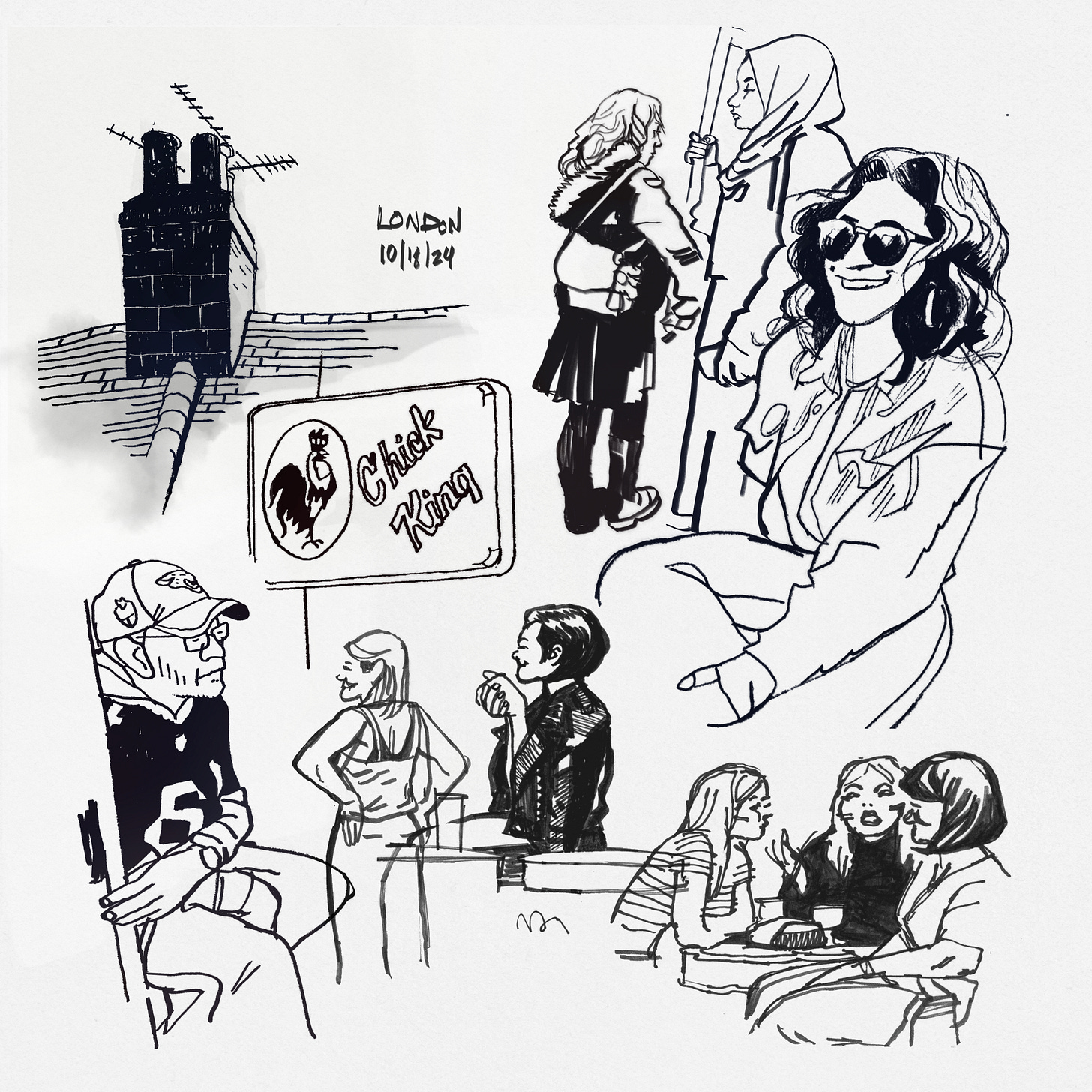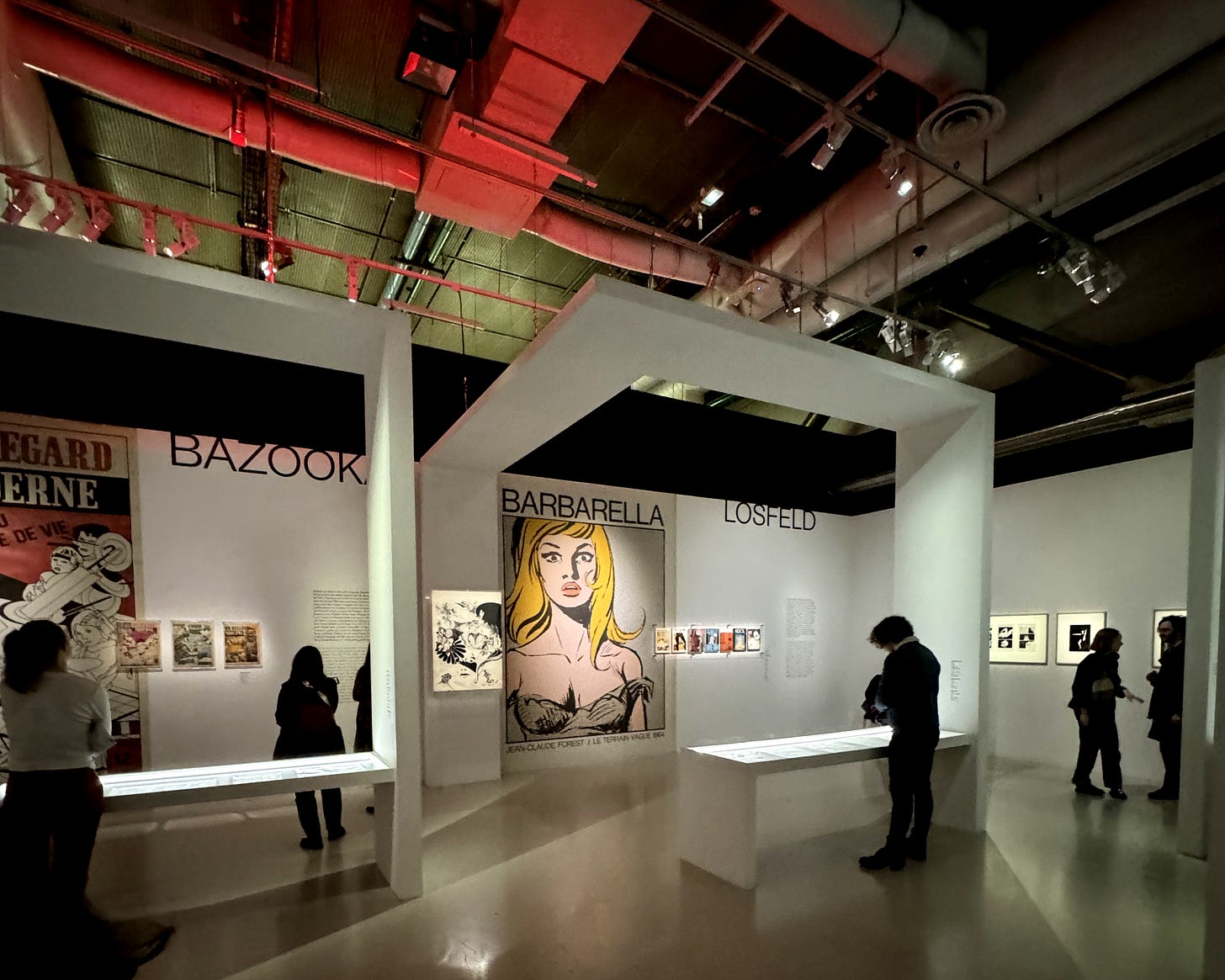Hey y’all,
Writing more about comics and art in Europe today. So if you missed it, here’s PART 1.
A quick heads up— the next post will likely include a new 6-page comic for PAID SUBSCRIBERS. So if you’re not currently in that tier, that’s an option you may want to consider.
Anyway, here’s part 2.
Hope you enjoy…
Outside of the Van Gogh Museum in Amsterdam, there’s a gift shop that sells his art smattered and smeared on everything and anything imaginable.
Key chains. T-Shirts. Coffee mugs. Dog sweaters. It’s a level of merchandising that would make Charles Schulz blush. And makes it clear that whether or not Van Gogh was the poverty-stricken genius of legend or not— there’s little doubt he ever saw a fraction of the profit these vendors hawking Starry Night mouse pads make in a year.
As tragically unfair as that might seem all you have to do is take a short stroll north of the Museum Quarter to find COFFEE SHOP THE SPIRIT. A Marijuana dispensary skinned with bootleg and off-model drawings of Will Eisner’s most famous character— THE SPIRIT.
Now, I honestly don’t know if COFFEE SHOP THE SPIRIT is a cool place or not— (I only ducked in to take a photo, Mom. I swear.) But I don’t think it’s a stretch to say that despite its kitschy charm— this branding just seems incredibly… off.
Still, this minor oddity is perhaps ONLY mentionable because unlike Van Gogh — there are no real examples of Eisner’s art living on in any spaces beyond the pages of his books. Yes, Frank Miller’s SPIRIT movie “adaptation” once dashed through theaters like a flasher in Central Park. But how many freshman stoners get lost in the raindrops of their A CONTRACT WITH GOD posters?
Despite all of Eisner’s impact, there’s little doubt that to your average person, there is a huge gulf in notoriety and esteem between his work and the old masters hanging in The Rijksmuseum down the street. Even setting aside any opinions of subjective quality, it still seems odd — that in an age where most of the images we consume move in a sequence to tell a story— Van Gogh is a household name, while Eisner’s is lucky to be whispered.
And then there is the most obvious question—
Does Van Gogh’s art live on to become a ubiquitous cultural touchstone if no one ever pastes it on the side of a coffee mug?
Of course, if you want your art sold outside of a museum it helps to have it hung in a museum first. Some kind of“serious” effort at curation that almost seems antithetical to the populist (which is the polite way of saying “disposable”) nature of comics.
Don’t get me wrong, comics are very worthy of the esteem that building them little houses, and charging tickets for a tour manufactures. But to me, it’s always been a question of why that’s necessary.
Personally, I’ve never really felt like comics belong in museums.
Or hanging art galleries.
Or any place you can’t carry them with you.
Much of the art in the The Louvre or theMusée d’Orsay may push back against the domineering mindsets that built Europe’s churches — but the buildings themselves are evidence that you may indeed be the company you keep.
For an artist, visiting those museums can make you feel like a probe lost in deep space. You may be valuable, and precious by the incalculable odds you’ve defied to exist— but those hallways and galleries are of an endless, universal scale that would cause even Galactus to push away from the table.
Still, if you can embrace, or at least try to move past, your feelings of insignificance— there’s generally a sense of wonder that sets in. A powerful but fleeting inspiration as you realize that all this art really was just made by people. People psychotically committed to carving silk drapery out of stone. But people nonetheless.
Sometimes that realization begins to work against the experience. Too many examples of a specific movement or school of art can seem to rob even the most stellar works of their originality. The halls of antiquity become a Cheesecake Factory menu—a Netflix queue.
Fortunately, comics exist in both a smaller and larger world. One that generally requires no such external context. Arguably, even the most byzantine comic is self-contained. It is a relationship with art that can form practically anywhere. An experience that isn’t even completed until read.
What happens then, when you nail a comic’s feet to the ground? Or perhaps more accurately, hold it up in light where it was never really intended to be seen?
On the sixth floor , hovering above a giant library stuffed with students certain to have papered their walls with a Van Gogh or ten, sat the Center Pompidou’s comics art exhibition.
And on one of that show’s final switchbacks, hung the original art for the back cover to Will Eisner’s A CONTRACT WITH GOD.
Encountering Eisner’s art here, in this vaulted context— just days after seeing it plastered across a bootleg menu for space cakes, well…The theme song from The Jefferson’s came to mind.
Took a whole lotta tryin’
Just to get up that hill…
Perhaps it was only because it was easier for the curators to get their hands on the art— but the North American inclusion in the show was largely focused on the cartoonists that you expect the French to focus on. Underground cartoonists like Crumb, or their more modern counterparts like Dan Clowes or Charles Burns. With a few smatterings of superheroes— covers by Kirby, Neal Adams, and Buscema. The requisite Frank Miller.
There were big impressive, displays for Hugo Pratt’s CORTO MALTESE and Claude Forest’s BARBARELLA. A space devoted to GARO Magazine and Tezuka. A couple of screens showing clips of comics adapted into animation.
Giant wall papers of manga and Chris Ware comics—of art that was produced to yield the most specific outcomes, now blown up to a scale clearly never intended or imagined by the artists.
And yet somehow, remained somehow powerfully elastic. Immersive.
Honestly, it was a crazy impressive collection, of breadth and variance that left me feeling inspired and encouraged about the possibilities of comics.
No, it wasn’t what I would strictly call “comics”— but it was great.
As much as I bristle at the kind of gatekeeping that assigns worth to art by nailing it to a wall— I understand and admit that there is true power in dissemination. In creating guard rails for the newcomer or casual viewer. In just giving people a place to start.
Sure, that kind of curation can create an artificial sense of value. It can displace and warp clout, credit, and financial value. But when there is no monocultural tentpole hammered into the ground— our subjective tastes and opinions are blown away as fast and as freely as they come.
And nothing pulled into greater focus the power of that kind of collective shelter than the Pomidou’s gift shop.
A gift shop stocked with comics of all shapes, sizes and forms. With comics on prints, and mugs, and tchotchkes. With items perhaps doomed to gather dust on a shelf, sure-- but comics sold hand over fist nonetheless. Each sale energized with the possibility of becoming a new reader's favorite.
For at least that brief couple of weeks, that space was more than a gift shop. It became the rarest of comics shops, one imbued with the afterglow of the prestigious hall you just exited.
Surely those comics must be important to be on those walls. And by extension, you, more cultured for having now seen them.
Comics as an experience to bring home and talk about.
A destination. A journey.
And now here at its end, you have at long last—
Taken the best photo of the Mona Lisa.
That wraps things up for now. But I quickly want to thank everyone who gave me feedback on crowd-funding my next comics collection. Your interest coupled with a very productive week at the drawing board has given me a lot of confidence in this project. Promise to update everyone once the cement settles on a plan.
Be on the lookout for the next post and that new comic.
More soon…
-j












A lot to digest there! Based on part 2, was there anything that happened that help manifest your next published work's timetable? As for Comic Art in a gallery; yup love it. I wish everyone could see original comic art up close, deserves to be seen by as many folks as possible, to appreciate beyond the artistry, beyond the technique, the fact that it has to WORK.
Long live Mr. brainwash.